From now on, we will simply talk about small cars, because they are undergoing a very beneficial evolution for the customer. On a dynamic level things have not changed substantially, but in terms of design and technology there is an appreciable leap compared to previous generations.
We are in a context where young people are less interested in buying a car than their parents, especially a small car. When it's not because of less interest, it's because it's less easy to afford, because the economic crisis has hit hard and without being independent from home, it's difficult to maintain a car.
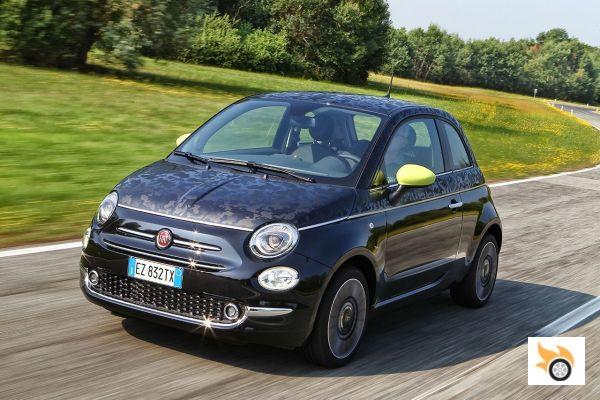
Therefore, manufacturers have spent years thinking about how to make these cars more attractive, how to bring them closer to a segment of young people who flirt with new technologies since they were children, and who want something more in a small car than a simple and impersonal transport appliance.
A-segment cars are 3.6-3.7 metres long, or less.
The smallest on sale is the smart fortwo, which in its new generation is 2.7 metres long. In terms of luggage space, it's 260 litres downwards. Incidentally, it's the fortwo that has the largest luggage compartment - that's funny!
If we draw a veil over the MINI's offer, these are cars with engines that are just enough power for other segments, but that move small bodies with a lot of dignity and a bit of joy without the need for great technological advances. Any engine consumes little power when it makes little effort, even if it's "old-fashioned".
It was normal to associate small cars to very spartan models, with just enough and little more. It was when BMW resuscitated the MINI brand that it was time to change the mentality, the Premium arrived. It turns out that you could make a small car and at the same time sophisticated. To a lesser extent, Daimler did the same with the smart brand, with a more spartan character than MINI. They created a school.
Fiat made a splash with the 500, and continues to do so.
And then the generalists realized that it was a good idea to make small cars with "something more". Fiat revived the idea of the charismatic 500 from the 50s, and it worked so well that several years after its launch, practically nothing has changed on the outside. And it's still the absolute segment leader... Its Ford Ka cousin was completely eclipsed.
Note that the Fiat 500 is not the cheapest car in its segment, it's not just about making cheap cars, they also have to offer something more, and there are people willing to pay for it. In sales, behind the 500 is the Panda. How will be its success, Fiat has expanded the 500 range with convertible version (500 C), family (500 L/500 Living), crossover (500 X) and sports (Abarth 500). In the purest MINI style, which by the way, is shrinking its range for having grown too much.
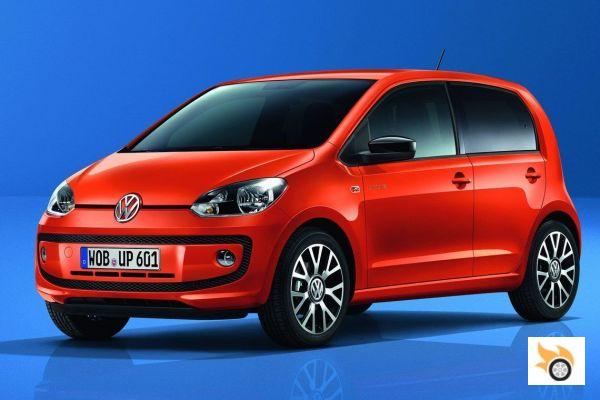
Another clear example of where the A-segment was going to go came with the Volkswagen Group's return to the "S" size. Previously it had offered the Volkswagen Lupo/Fox and SEAT Arosa, which had lost appeal against their upper-segment counterparts, the Polo and Ibiza. They brought out three models at once: Volkswagen Up!, SEAT Mii and the Skoda Citigo. They might even bring out the Audi A0.
To make the numbers come out you have to sell a lot of units.
That's another, when we talk about small cars, synergies are very important in order to reduce costs, it is an unprofitable segment. There is the case of smart, which has been a ruinous business for Daimler in the first two generations, and that they had allied with Mitsubishi. This time they do it with their French allies, the Renault Twingo and smart forfour have a lot in common (also the fortwo, but less).
Another important alliance is that of PSA Toyota, which consists of the Citroën C1, Peugeot 108 and Toyota Aygo. The first generation of 2005 was twin brothers. Only the logos and bumpers changed, otherwise they were the same except for equipment details and little else. This time they have a clearer differentiation, although they share a lot of guts, it's not so blatant. And speaking of faces...
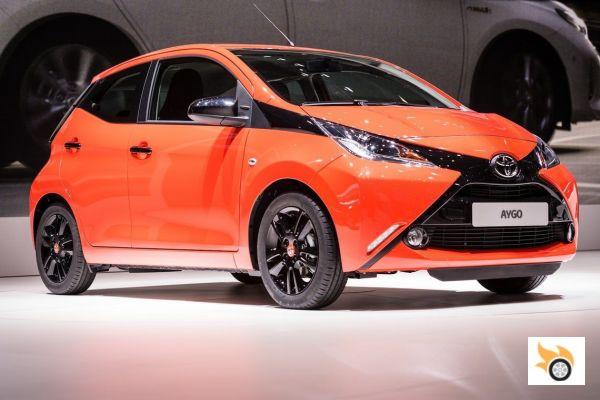
Where is the A-segment heading?
One of the things that strikes me the most is that the manufacturers have fallen off the Diesel phenomenon, and the manufacturers that had adopted these engines in the segment have withdrawn them. Now only MINI allows this possibility, and that's if we consider the new MINI as A-segment. In my opinion, they should be moved to the B-segment, as they are already 3.8 meters long. The Roadster, Cabrio, Coupé... of the previous generation (R56) are still A-segment.
In this segment the price differences weigh a lot.
I shouldn't forget Fiat either, the 1.3 MultiJet 75/95 hp still powers the 500 and Panda, but the offer is mainly petrol. Why this "regression"? It's obvious, they are more difficult to amortize and we are talking about a type of car that is not used to do so many kilometers. The differences in consumption are small, but the difference in price is noticeable.
For the same reason in this segment hybrid technology has not burst into this segment, for the moment it implies an extra cost that customers would not want to assume, not even Toyota has dared (yet). At least there are alternatives for those who want to make miles to the beast, but without changing engine. There are LPG (Fiat and Opel) and CNG (Fiat and VAG Group).
Electric cars are the Mitsubishi i MiEV and its cousins (Citroën C-Zero and Peugeot i0n), as well as the newcomer Volkswagen e-Up! They are by no means the most popular options, but their size makes sense for urban and peri-urban use.
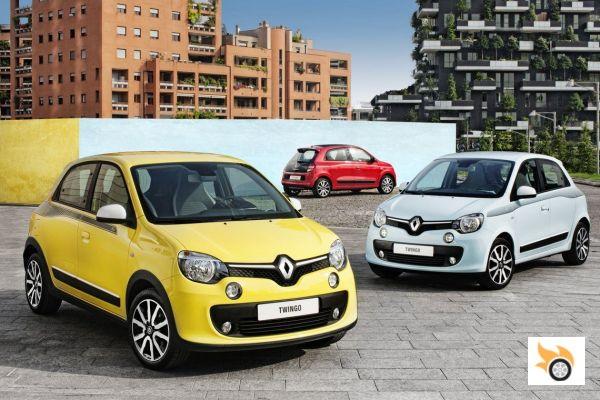
In terms of dynamics, the only breath of fresh air in the segment has come from the Daimer/Renault pairing, because the Twingo and smart share the same platform, with "everything in the back": rear engine, rear-wheel drive. It's the same thing that was done with the smart fortwo right from the start. Also the Mitsubishi PSA electric cars have this solution: all rear.
For the rest, we are in the same
The engines have changed little, very small displacements, where a 1.4 is a big engine, and where you get aquilatados consumption. Some come with turbo, and most are three-cylinder. In this segment, honestly, I see more sense than in higher ranges and with much more weight to move.
As they are short wheelbase cars, their dynamic behavior has changed little or nothing, but the ESP has made the difference. By conception, they are nervous cars and with a wiggly rear axle, but the electronics have mitigated it significantly, without working miracles. As for the use of automatic transmissions, it is not difficult to find one or more versions within each range.
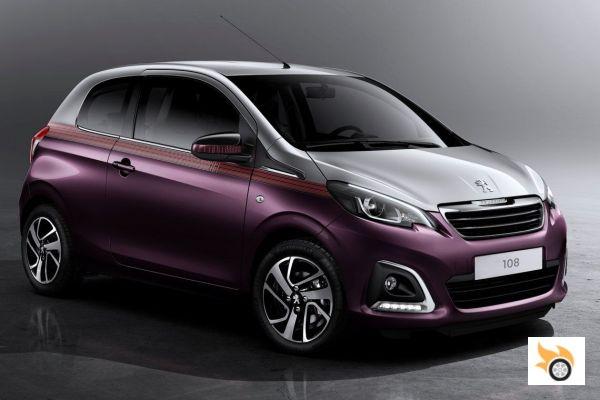
My car is mine: personalisation to the max
The trend of making the car easier to distinguish from others has only recently started to catch on. If I'm not mistaken, MINI was the brand that started the strongest with this kind of offer. I'm not only talking about body colours, but also about vinyls: checkerboard patterns, "competition" numbers on the doors, etc.
It used to be the norm for an A-segment car to have an interior sadder than a certain scene from Bambi, but that's no longer the case. Colour has arrived in the interiors, matching colour combinations, even eye-pleasing motifs on the interior plastics. They will still be as tough as ever, but they look different now. Some even have soft-touch surfaces, even if it's just a textile layer.
It's not so rare to find cars with an opening roof, there you have the new C1 and 108, with a panoramic roof that opens and folds in the C pillar. It's the same system used in the Fiat 500C, as we're talking about a textile roof, it's solved with "little" money and there's no need for expensive mechanisms, or reduce the trunk to the minimum, or add a lot of weight. Since popular convertibles are practically extinct, it's a detail.
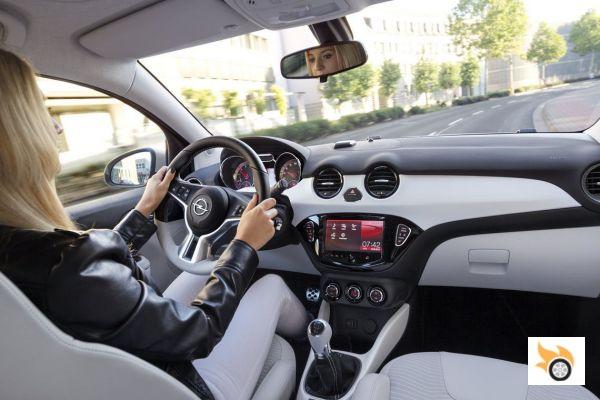
A technological revolution
Nowadays, small cars are starting to have a multimedia offer that would put more than a few years old saloon cars to shame. The time is not far away when the biggest technological concession to the users of these cars was a 3.5″ headphone jack to connect an MP3 player with our music. For the rest there was the CD-Audio (the MP3 player was slow in coming) and if anything what they broadcast on FM.
The integration with the mobile phone via Bluetooth appeared, initially only as a hands-free system. Then came the Bluetooth Audio function, which allows you to transmit to the stereo digitally and without loss the contents of the mobile phone or radio content via the Internet. These are developments that have been coming along gradually.
Right now we are in the era of integration with the "smartphone", given that a huge amount of the population has mid/high-end terminals. It goes a step further, it's not just about being hands-free or playing audio via streaming. I'm talking about Internet connectivity, which brings us into the ecosystem of applications, or "apps", which sounds more modern.
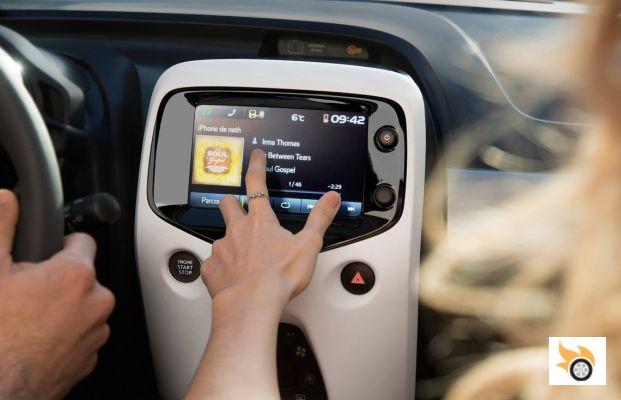
At the moment the situation is under control, manufacturers have the power to filter what kind of applications are admissible in the car, avoiding the intrusion of games, instant messaging applications and other types of programs that make your hair stand on end just thinking about their "integration" with driving. That applications such as Waze (navigator) or Coyote (warning of radars and danger) are integrated seems fine to me.
Monochrome screens are disappearing
The ultimate integration is the "Mirror Link", i.e., transferring to the car's screen what you are seeing on your phone. Combine that with the screen's ability to receive touch inputs, and it's like turning your phone into a tablet and integrating it into the dashboard.
However, this integration thing is a bit half-baked. You need to have an application on your phone that is compatible with the terminal to act as an "intermediary" with the car's multimedia system. If we leave the majority platforms, which are Apple iOs, Android and Windows Phone, we are a bit sold. Nobody remembers the infamous Symbian? What about Blackberry? Does nobody use them?
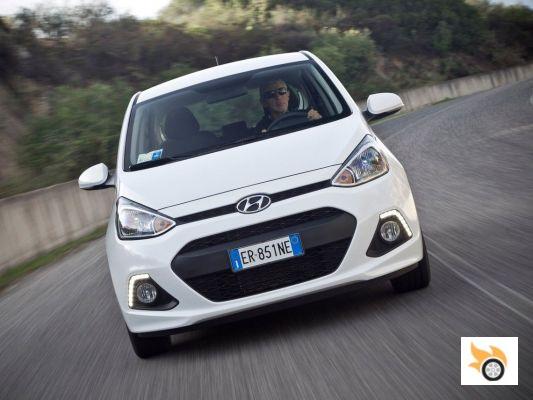
The good thing about these screens is that they allow you to integrate various gauges and buttons, simplifying the dashboard design. For example, in the VAG Group's triplets the navigator screen, which is an external navigator with a very decent integration, represents information from the on-board computer. Eventually it will happen like in the B-segment, more things will be concentrated on the touchscreen, doing away with buttons, like those for the climate control.
Sorry, I've skipped over the issue of navigators.
Integrated solutions are expensive, and in this segment the word "expensive" is to be avoided at all costs. A quick way to get out of the way is with a pre-installed TomTom/Garmin, or use mobile navigation apps. The C1, 108 and Aygo use Waze (or equivalent) as a navigator, and replicate the phone screen on the car screen. Why complicate things further? Smartphones usually have GPS, it's just a matter of getting lost.
We are not only talking about entertainment technology, there are also good advances in terms of safety. Thank you, European Union, for imposing ESP. In addition, manufacturers are beginning to integrate systems typical of higher segments, such as automatic braking (even if only in the city), rear-view cameras for parking, cruise control, etc.. The little ones also deserve these things.
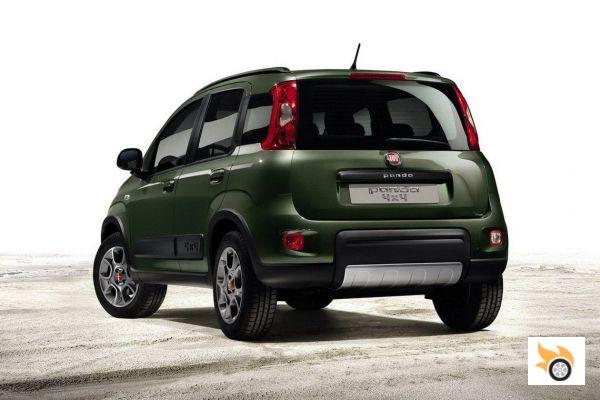
As we have seen, these are the axes with which manufacturers want to continue attracting customers to the A segment. For those who still want a spartan and practical car, to go from A to B, will continue to have it in basic versions. That will be the case until the demand is more for higher-end models, so that the basic models will disappear, until they remain as models for rental companies.
What if the "crossover" craze arrives in the A-segment?
Well, it's already started. There you have the Opel Adam Rocks or the Fiat Panda Trekking. Another thing is that it becomes an epidemic, as has happened in the B segment (Juke, Mokka, Ecosport, Trax, 2008, etc). I mean put some decorative plastics, raise the suspension and raise the price more than 1,000 euros.
As for SUVs, look, there's the Suzuki Jimny, the Lada 4×4, and that's it. If we accept all-wheel drive SUVs, the only competitor is the Fiat Panda Climbing 4×4 at the moment. These cars with winter tyres do real stunts in high mountain areas, where the big SUVs have a hard time, these go like Peter in the living room of his house. You know what I mean...
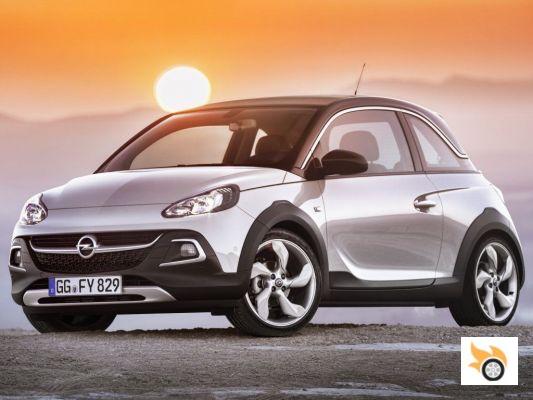
I don't know if the new A-segment cars are going to be able to seduce young people who aren't so keen to grab the steering wheel, but of course the integration of the car with the mobile phone is going to become essential. Every dashboard will have to have a touchscreen that brings together several functions. The question is up to what level it is going to go deeper, will those who have a three year old mobile phone not be able to use it in their new car?
As a computer scientist by training, I admit that this backward compatibility thing ends up being frustrating, there comes a time when your precious "gadget" becomes a brick because it can no longer coexist with modern things. Another issue that scares me is the duration and useful life of these integrated systems, in the midst of the "throwaway" era, where we look with perplexity to those who have a mobile phone five years ago (working perfectly or halfway).
The main manufacturers have already begun to compete in this area. There are laggards, such as Hyundai, Mitsubishi or Suzuki, technologically behind. The Internet is already part of the reality of the small car, the first step has already been taken.
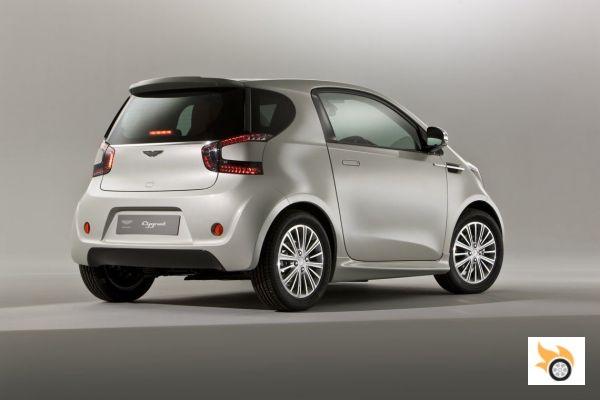
However, it is worth remembering that there is a limit to how luxurious small cars can become. The Aston Martin Cygnet was a failure, and the car from which it was derived, the Toyota iQ, didn't work very well either. And there are models that didn't work so well, like the three-door Lancia Ypsilon or the aforementioned Ford Ka.
Let's see what move VAG makes when it's time to renew the Up!, Mii and Citigo. The new Ford Ka arrives in 2016... And, my friends, we're going to have to start judging these cars by their size alone. Even their sporty versions can give us a heart attack, I'll leave the Abarth 500 Biposto there... even if it doesn't have popular prices.

























